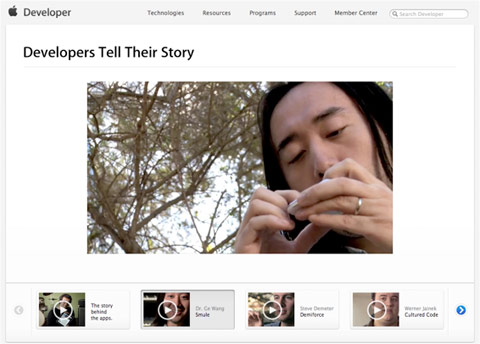Our clients often shy away from sharing personal details in their short films. From their perspective, individual thoughts, feelings, and anecdotes are not relevant to the story they want to tell about their organizations, so they would prefer to leave the personal stuff out. It’s understandable but in our experience a major missed opportunity.That’s because personal connections are one of the most powerful vehicles for conveying a story. When speakers share details about their lives, those details provide human insight into their backgrounds, inspirations, struggles, and successes. Even if the subject matter is foreign, those personal details are universally relatable and therefore draw the audience closer and make us more open to listening to a story.
They also make a short film more memorable and repeatable, as they give the audience stronger hooks and reinforce the notion that these are people with whom we can relate. Increasing the likeability of someone on screen almost always has a direct impact on the success of a short film. After all, all of us have only so much bandwidth for new information, stories, and causes to care about. We’re much more likely to share that bandwidth with someone we can relate to on a personal level.
For an example of how effective personal connections in short film can be, consider Apple. In making their business case to their most technical audience—app developers—they masterfully use personal connection as the vehicle to draw developers in. Here are 5 things you can learn from Apple’s films:
1) Lead with the personal connection
Since it’s such an effective vehicle for transmitting the story, make sure to lead with the personal connection. Don’t bury it toward the middle or end of the film. An easy way to lead with the personal connection is to start with a statement of motivation, as several of the app developers in the Apple films do.
“I feel like I was born to create apps.”
“For us that’s what it’s all about, creating great experiences for the fans.”
2) Go behind the scenes
Audiences enjoy walking a mile in a protagonist’s shoes. Films make this easy, as a few carefully picked, visually compelling shots can transport the audience through a person’s daily routine or behind the scenes of their craft. In Apple’s case, we see the founder of Smule playing the iPhone as an instrument, walking through the Stanford campus, and conducting students. Likewise we see a developer from Demiforce take a morning bike ride through San Francisco.
3) Be specific
Generalizations don’t correlate to personal connections. Details do. Think about reading a great book, the way an author can bring people and rooms and landscapes to life with precise language. You need to be equally precise in the details you choose to share in your film, as those are what enable people to latch on and remember. Returning to the Demiforce example, the developer says, “Ever since I was five, my parents had this Atari 2600 in the basement and I would spend so long down there trying to figure out those games.” The age. The video game console. The location. All are specific enough to make this” relatable.
4) Proceed with curiosity
If the personal connection is not obvious, don’t give up. Proceed with curiosity. Taking an inventory of a person’s day might provide clues to a possible personal connection that can be highlighted in the film. Asking how their personal lives connect to the work that is being featured in the film can often lead to gems. Insights gained through hobbies can sometimes work just right. Pinpointing the right personal connection can be tricky, but it’s most likely worth digging deeper for.
5) Just a taste is all you need
A microdoc is only two minutes long, so the opening personal connection will only be a taste. We don’t need the person’s whole background; what we’re looking for is an authentic, compelling, intriguing way to open up the audience’s channel of receptivity to the story. In Apple’s film about Igloo Games, all it takes is one line: “Never in my wildest dreams did I think that I could just travel the world while making games.”

